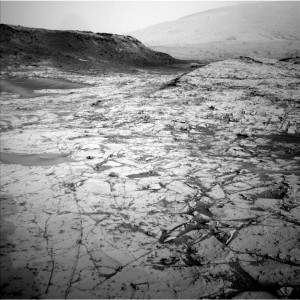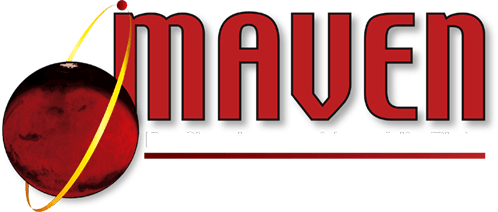David F. Mitchell, MAVEN Project Manager at NASA’s Goddard Space Flight Center

MAVEN is now fully into its Science Phase at Mars and the scientists have been releasing exciting results, not the least of which were recent findings from the Comet Siding Spring encounter. The Imaging Ultraviolet Spectrometer was able to observe intense emissions from magnesium and iron ions in the atmosphere in the aftermath of the comet encounter. The Neutral Gas and Ion Mass Spectrometer directly sampled and determined the composition of comet dust in Mars’ atmosphere, something that has never been done before. Our Solar Energetic Particle instrument observed significant solar activity both in the form of flares and coronal mass ejections from the Sun to Mars. We also generated a map of Mars’ ozone layer in the lower atmosphere. Finally, we’ve been able to provide a view of the escaping atmosphere of Mars showing the loss of atomic oxygen, atomic carbon, and atomic hydrogen. Great science with much more to come!
Final pre-Science Phase checkouts of the MAVEN system also included a full demonstration of the Electra Relay capability between MAVEN and the Curiosity rover on the surface of Mars. MAVEN relayed the image shown here from Curiosity’s Navigation Camera to Earth on November 6th. This image shows part of the “Pahrump Hills” outcrop and was taken at Mars on October 23rd.
On a personal note, I transitioned off of the MAVEN Project in November and am moving on to my next adventure. Per plan, the standalone MAVEN Project will be managed within Goddard’s Space Science Mission Operations (SSMO) Project. Led by Rich Burns, SSMO is a multi-mission operations project that receives missions from the “development projects” and manages them through long-term operations. The MAVEN Principal Investigator, the science team, and all MAVEN partner institutions (University of Colorado/Boulder, NASA/Goddard, University of California/Berkeley, Lockheed Martin, NASA/Jet Propulsion Laboratory) will continue on with the MAVEN mission.
This will be my last MAVEN monthly update, but I may send out a note on occasion when a press release comes out. You can continue to follow MAVEN on Facebook and Twitter (MAVEN2Mars).
It has been a great pleasure and honor to work with this team, really a highlight of my career. I’ll leave you with a video titled “Voices of MAVEN” that was recently posted to the web. The people in the video represent hundreds of others who have made MAVEN such a great mission.
Go MAVEN!
[addthis]

